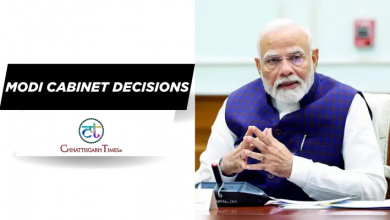What is the UN’s stand on Kashmir? What are UN Security Council members urging India and Pakistan to do to resolve the issue?
The story so far: On Friday, August 16, the United Nations Security Council (UNSC) held a “closed consultation” meeting on the situation in Kashmir. On August 5, India had ended the special status of the State of Jammu and Kashmir (J&K) under Article 370 and Article 35A, carving it into two Union Territories: J&K and Ladakh. The Valley was put on lockdown, and mainstream political leaders were taken into custody. Both India and Pakistan were kept out of the UNSC meeting on Friday. The last time ‘The India-Pakistan Question’ was taken up by the UNSC was in December 1971 when India and Pakistan fought a war leading to the creation of Bangladesh. It had been discussed during the 1965 war too when Indian and Pakistani forces clashed in Kashmir and the western borders. After the abrogation of Article 370 last Monday, Pakistan wrote to the UNSC. China, a permanent member of the UNSC, and an ally of Pakistan sought a meeting of the UNSC to discuss the developments in Kashmir.
Also read | Jammu & Kashmir: From a State with the autonomy to two Union Territories
What did the UNSC discussion throw up?
The UNSC has not yet put out a statement, but after the meeting, India insisted that issues around Article 370 and special status to J&K were an internal matter. The Indian Ambassador to the UN, Syed Akbaruddin, accused Pakistan and China of attempting to impart greater significance to the meeting than was warranted. One question that has been raised is about the situation in the Kashmir Valley now. Is the ground reality in the formerly undivided princely State of J&K similar to that of the late 1940s when key UN resolutions, including the UNSC Resolution 47 recommending plebiscite, were passed?
The Kashmir issue at the UN debuted on January 1, 1948 as India urged the UNSC to discuss the conflict that had erupted three months earlier when Pakistan sent irregulars, tribals and camouflaged soldiers into Kashmir prompting the Maharaja of the princely Indian State to accede to India. The submission of India detailing the violence unleashed by the irregulars on the local population and infrastructure became the foundation upon which the “Jammu and Kashmir Question” was created at the UNSC. The title was changed on January 22, 1948 to “The India-Pakistan Question”. From its origin till 1971, the topic featured prominently at the UNSC especially when both countries clashed.
Under Resolution 39 on January 20, 1948, the UNSC set up a three-member UN Commission for India and Pakistan (UNCIP). The disagreement between India and Pakistan led to the first failure as the commission failed to materialize. The commission was finally reconstituted with five members on April 21, 1948 and it was mandated to plan a mechanism to ensure a plebiscite in the State. (This was part of the UNSC Resolution 47). The UNSC Resolution 47 passed on this date urged India and Pakistan to hold a plebiscite after the restoration of law and order. The UNCIP passed a resolution on January 5, 1949, that provided the mechanism for holding a “free and impartial plebiscite” in Kashmir.
At this juncture, Pakistan managed to get an upper hand as the UNSC, under the influence of the United Kingdom, agreed to a ceasefire proposal without first ensuring Pakistan’s withdrawal from the area that it had gained during the early tribal raid in Kashmir. This allowed Pakistan to hold on to territory that would ultimately contribute to undermining the terms of the plebiscite itself.
Why did the plebiscite plan fall through?
The 1947-48 India-Pakistan war ended in a ceasefire but the Kashmir solution remained elusive. A key condition for the plebiscite was a withdrawal of Pakistan from the areas under its control and India withdrawing individuals who were not residents of the State. However, neither of this happened. Instead, both sides firmed up their presence in the areas under their control. India took the Kashmir issue to the UN for “prompt and effective action” but as pointed out by scholars, the big powers ensured that the issue lingered on and became a part of the global concern on conflicts.
What is the relevance of the Simla Agreement to the Kashmir issue?
Under the Simla Agreement of July 2, 1972, India gained Pakistan’s commitment that the Kashmir conflict would be resolved bilaterally. Pakistan, however, kept the issue alive by hosting the Islamic Summit of 1974 where Pakistan began courting the Islamic world for its major foreign policy goals. After the Simla Agreement, Pakistan proceeded to further entrench the territorial status quo as Prime Minister Zulfikar Ali Bhutto on November 7, 1973 ruled out an independent status for Azad Kashmir.
The Northern Areas and Azad Kashmir were territories of the princely Indian State of Jammu and Kashmir that were awaiting plebiscite but the case for “accession” ruined the chance of Pakistan acting in accordance with the conditions of a plebiscite, writes Aman M. Hingorani in Unravelling the Kashmir Knot. Under these circumstances, Kashmir as a legal problem appears far more daunting than Kashmir as a political problem that can be addressed by two powers of South Asia.
What have the members of the UNSC said?
Several of them have urged India and Pakistan to resolve the issue bilaterally — as India too has argued. Pakistan’s Foreign Minister Shah Mahmood Qureshi had gone to the UN with China’s support but the heightened military tension on the Line of Control and the ground situation on both sides show that the conditions in which the UNSC had passed its early resolutions on Kashmir do not exist any longer. Discussing the issue under UN auspices will be difficult for several reasons. First, the two parties (India and Pakistan) have continued the process of assimilation of territories under respective control into their union of states. Second, both sides had agreed to deal with it bilaterally.




